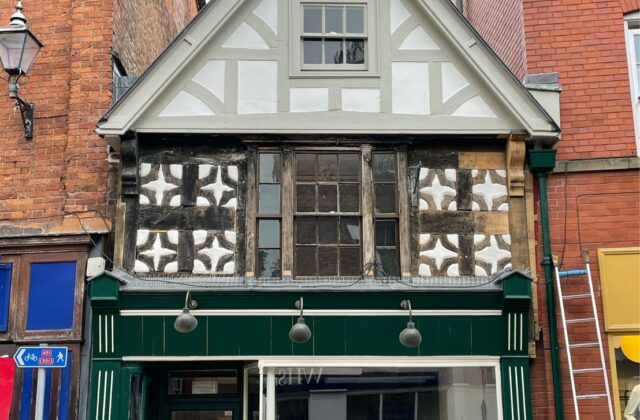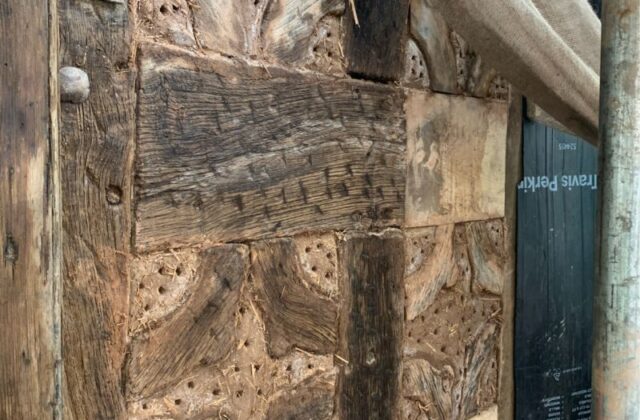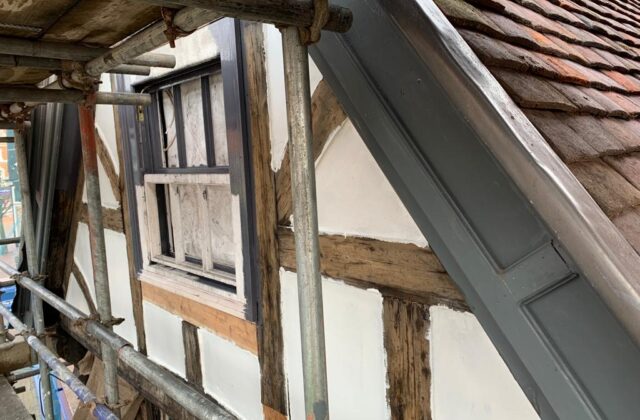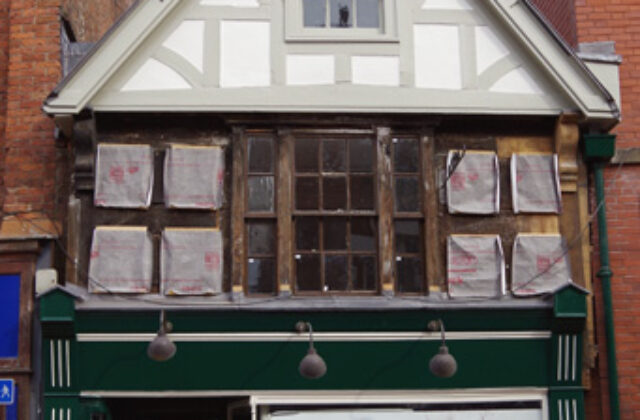45 High Street is a Grade II Listed oak-framed building in the centre of Nantwich, Cheshire. It is believed to date back to the 17th century due to the presence of internal diagonal cross braces typical of this period and is thought to be a former merchant’s house. The building has seen a variety of occupants over the years but for approximately the last three decades it has been home to Bridgford’s Estate Agents.
The building comprises of two storeys and an attic and has received more modern additions throughout its history including 3-light sash windows in the 18th century and modern barge boards and shop front. Restoration work was required as the front wall had separated from the rest of the building and damage had been caused to the timbers and plaster by water ingress. Therefore works to stabilise the front of the building were deemed urgent. Working alongside Atelier MB Architects and Lambert Smith Hampton, Quadriga Contracts Ltd began a programme of works, initially to stabilise the structure before moving on to further restoration.
Works included:
- Sympathetic masonry cleaning, repointing and replacement where necessary.
- Roof repairs—this involved removing the slate tiles of which 40% were salvaged and reinstated. The remaining 60% were replaced using reclaimed slate to match the original.
- Lath and plaster repairs to render infill panels,
- Window repairs and replacement.
- Render repairs.
- Shopfront redecoration in a more traditional style.
- Structural timber repair and replacement,
One of the most interesting aspects of this project was the lath and plaster repairs. The lath and plaster technique was popular through the 17th and 18th centuries and became the interior wall construction method of choice. Lath and plaster evolved from an earlier, more basic process called wattle and daub. Once plasterboard was brought into use in the UK in the 1930s, lath and plaster fell out of favour as it was more costly and time consuming.
The finishing touches to the newly restored Bridgfords building include a redecorated shop front more in keeping with the character of the building and the repainting of the timber at the front of the building to match what is thought to have been there originally.





